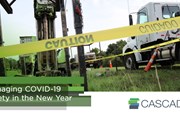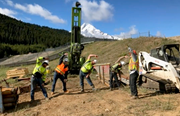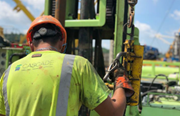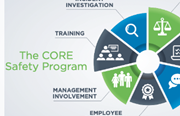The Benefits of Engaging Employees in Incident Avoidance Efforts
By: CascadeCombining your organization’s safety policies and procedures with an effective safety plan is the key to establishing an effective Incident Avoidance Strategy.
At Cascade Environmental, we believe there is a distinct difference between a successful safety plan and an Environmental Health and Safety (EHS) policy manual. A safety plan includes elements that clearly define safety efforts, responsibilities, expectations and the means for achieving them. As a leading national drilling company, Cascade’s CORE™ safety plan contains the elements that you would expect to find in a world-class safety program.
To use a sports analogy: A football team can’t expect to win a game without designated plays and coaching. If you were to solely rely on your familiarity with the rules of the game without following a game plan, there’s no way you’d achieve your potential.
That’s why it’s crucial to develop a game plan specifically designed to mitigate risk through employee engagement, while also delivering a foundation for a true culture of safety and presenting a clear pathway toward safety success.
CORE™ Elements:

One of the most effective tools in our CORE™ Program has been our Cascade Card Observation and Development Program, which provides an effective yet relatively simple means for hazard recognition, with the combined benefits of employee engagement and a hazard-free workplace.
An "engaged employee" is one who is fully involved in and enthusiastic about his or her role, and as a result, will extend desired effort in ways that align his or her organization's interests with their own.
The Cascade Card combines a hazard observation program with an employee risk identification development and training program. At Cascade, we developed the program internally to reflect industry-specific incident avoidance strategies while adding components to enhance our training program. The observation tool enables field crews to actively report and mitigate safety hazards while simultaneously delivering an accurate and personal reflection of the participant’s aptitude for hazard recognition and control. The Card is the means by which our employees can take a moment and assess the situation, implement a corrective action, and then proceed to complete the task safely.
A company can expand the benefits of a hazard observation process beyond the direct mitigation of job site hazards and the trending of data by analyzing their employees' input. This can help to determine which employees have sufficiently developed the skill of risk assessment and control, and which employees might need some additional coaching.
There is a misconception that job site safety is common sense, but that’s not necessarily true. If you relied solely on individuals’ common sense to assess and mitigate hazards, you’d quickly find yourself filling out as many incident reports as time sheets. An effective hazard observation process enables you to report and mitigate safety hazards while working in concert with training new or underperforming team members in mitigation techniques.
You don’t have to send your employees home the same way they came to work; you have an opportunity to send them home with an improved risk identification and control skill set.
Additionally, an organization can utilize observation input for additional training purposes specific to what constitutes a hazard and what is an effective control or mitigation. An organization can publish a monthly bulletin which includes a collection of the previous month’s employee submissions and actual examples of the recognized hazard and control accentuated by a visual prop or photo. A bulletin full of real-world examples can function as a great platform for your visual learners.
TYPICAL OBSERVATION TOOL:
- What unsafe act or condition did you observe?
- What did you do to intervene or correct it?
- Select a root cause and category that best describes it.
- How soon after observing the unsafe act or condition did you intervene and/or correct it?
FARMING INDIVIDUAL OBSERVATION INPUT AS A MECHANISM DURING THE EMPLOYEE REVIEW PROCESS.
Employee’s safety performance can now be substantiated by quantifying effort, as opposed to the archaic method of utilizing lagging indicators like incident history. Employees engage and remain engaged since the data supplied by them through the observation vehicle is used in their individual performance review. The quality of their observation(s) becomes a component of their overall performance; i.e “how proficient is the employee at risk identification and control”. The outdated approach of trying to leverage participation through the use of external incentives is no longer needed as the antecedent is the employee's desire to perform at an acceptable level.
Implement a hazard observation program as part of your employee’s job performance evaluation effort and increase engagement while eliminating job site risk and improving your safety performance.









